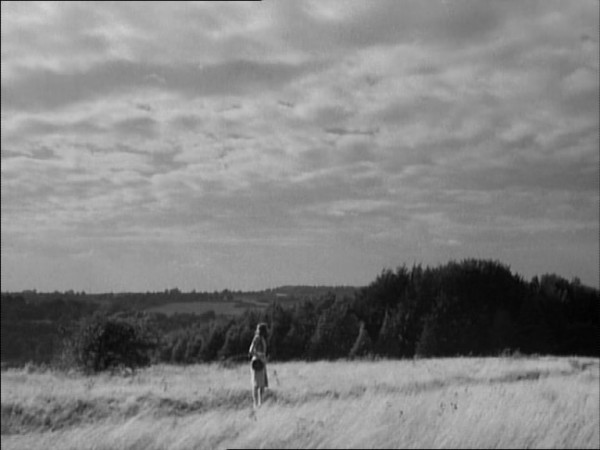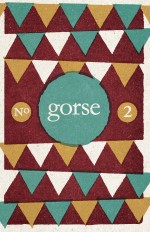The Isle is Full of Noises

By Brian Dillon.
Listen keenly enough to the land and the dead will speak out of it, the dead will move among us. It is easy to forget in this scene the British and German airmen fallen from the sky over Kent; also that Colpeper is speaking to a room full of soldiers who are about to be mobilised for D-Day: that is, to an audience of potential spectres. Alison is the only one in the lecture room taking the Glue Man seriously, and not only because she is in possession of her fiancé’s archaeological finds from the Pilgrim’s Way, which she intends to donate to the local museum. She too has visions out there on the downs, catches the weakening echo of sounds and stories that are scored or graven into the countryside and can’t be completely drowned out by the noise of fighter planes overhead or armoured troop carriers ploughing through the brambles. In the film’s most visionary moment, Alison and Colpeper have an accidental encounter on a hilltop outside Canterbury, and lie together in the long grass for a few minutes, listening out in the stillness for sonic ghosts. Monochrome clouds rise above them like vast thought bubbles – Powell tells us that Hillier waited for hours to film the right cloudscape, though at the crucial moment when Alison cocks her head and glances sidelong at the sky, she’s framed by a patently fake studio backdrop. Suddenly there are real voices nearby: Gibbs and Johnson are on the scene, out for a stroll, and the spell is broken.
When A Canterbury Tale was released in 1944 – the premiere was held in the city on the 11th of May – the press book distributed to critics and reporters announced ‘a new story about Britain, her unchanging beauty and traditions, and of the old Pilgrims and the New.’ In the film’s final moments, after Alison’s fiancé has been found alive, Gibbs been invited to play the cathedral organ, Bob Johnson’s missing correspondence delivered and the Glue Man absolved of his merely misguided crimes, the patriotic viewer would be forced to an uplifting conclusion: ‘These things i have just seen and heard are all my parents taught me. That is britain, that is me.’ It’s a usefully elevated message just a month prior to the Normandy landings, but an obvious misreading of the film. For what kind of Britain have Powell and Pressburger given their public? For sure, one in which some accommodation may be reached between old and new, wartime exigency and dreams of peacetime, social order and the erotic freedom that comes with the constant risk of violent death. But it’s also impossible to banish the sheer eccentricity of the tale and of the images by which it is conveyed, not to speak of the film’s insistence that here is a land that simply cannot forget its dead, where a bright turn on a country road will lead you into thicketed shadows of loss as well as legend. Colpeper, named for the great seventeenth-century herbalist, is a magician or alchemist of sorts, with his gluepot and his magic lantern; but he’s also a figure out of antic rural lore, a Green Man gone wrong. There is a good case for saying that A Canterbury Tale escapes not just the strictures of wartime propaganda but even the spectacular ingenuity of The Archers’ developing style, and becomes something altogether more spooked and elemental. For all its bucolic interludes and comic asides, the film seems at times less of a piece of mid-century British cinema and more an emanation of the Surrealised gothic attitude to english landscape that had lately troubled painters such as Paul Nash and graham Sutherland. It’s a film, after all, that begins among pilgrims, with their attachment to relics, and ends among modern ruins.
[This is a short extract, the full article is available to read in Issue Two]
ABOUT THE AUTHOR
Brian Dillon’s books include Objects in This Mirror: Essays (Sternberg Press, 2014), Sanctuary (Sternberg Press, 2011), Tormented Hope: Nine Hypochondriac Lives (Penguin, 2009) and In the Dark Room (Penguin, 2005). He is uK editor of Cabinet magazine, and reader in critical writing at the Royal College of Art. The Great Explosion, his account of a disaster in Kent in 1916, will be published by Penguin in 2015. He is working on a book about the essay as form.

